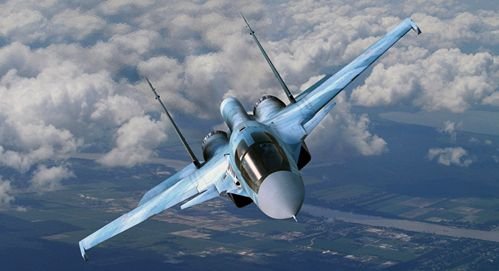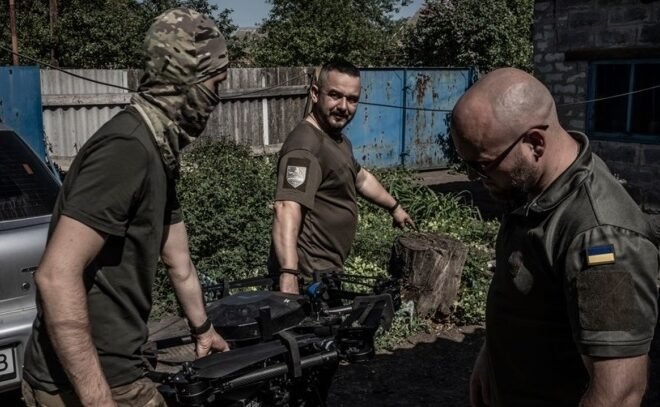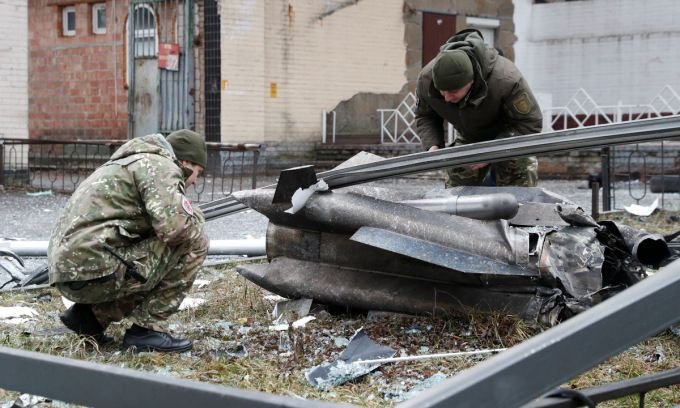
Tactics of Russian aircraft bypassing the US and secretly entering Syria
Russian Su-34 bombers participate in the IS air campaign in Syria.
On September 20, 10 days before Russia began its air campaign against Islamic State (IS) rebels in Syria, from satellite images, the US and its allies discovered nearly 30 military aircraft including fighter jets.
Most of these aircraft are believed to belong to the 387th and 368th air force brigades at the Budynnovsk base, in the Stavropol Krai region of Russia, up to 2,400 km from Latakia airport, the French defense website Réseau International reported.
Take a detour
One theory is that Russian fighter jets took a detour, bypassing Azerbaijani airspace, flying through international airspace over the Caspian Sea, entering Iranian and Iraqi airspace to reach Syria, according to the site’s defense experts.
US military experts believe that this possibility is impossible, because the airspace over the Caspian Sea and northern Iraq is under the control of US and Israeli early warning aircraft.
For a long time, the US military has deployed many AWACS airborne early warning reconnaissance aircraft at Incirlik air base, eastern Türkiye and a number of bases in Bahrain.
In addition, in the past, Israel’s early warning aircraft worked very effectively and detected most aircraft moving in the airspace of Middle Eastern countries.

The purple line simulates the flight direction of Russian fighter jets over the Caspian Sea before reaching Syria.
Réseau International said that on September 24, when receiving information that Russian pilots made the first flights from Latakia airport, Israel immediately sent a modern G550 early warning aircraft to patrol the Mediterranean.
‘Hiding in the shadows’ and jamming tactics
The Flightradar24 website, which specializes in tracking the journeys of aircraft around the world, recorded this plane’s dense flight over the Mediterranean that day, but the G550’s modern radio reconnaissance system did not.
French military experts say that fighters such as the Su-34, Su-24, and Su-27 have the ability to bypass the US and its allies by flying in coordination in narrow formations, `hiding` in the shadow of transport aircraft.
Under these conditions, the early warning radar systems of the US and Israel can only detect transport aircraft, because the radar reflection frequency between Russian aircraft is identical.
However, this `hiding` tactic can only be effective against fighters with high speed and large flight range.
In addition, Mi combat helicopters cannot fly above 4 km altitude, of course they cannot fly in coordination with AN-124 transport aircraft.
Experts say the most reasonable explanation is that these military aircraft are equipped with effective Russian jamming electronic warfare systems.
According to military experts, Russia’s Su-25 attack attack is most likely equipped with the SPS-171 active jamming system.
`And in this case it worked effectively beyond the imagination of American military experts,` said Jean-Marie Lebraud, a former expert at the French Ministry of Defense.

Diagram of the operating range of the ground and air warning radar systems of the US and its allies.
`It is worth noting that this system has been evaluated by NATO members, including Romania, as ineffective. In 1986, Romania was provided by Russia with the SPS-141 jamming system – an unmodified version.
Mi series combat helicopters are equipped with Russia’s most modern electronic warfare system, Richag-AV.
For the large Il-20M spy plane, the early warning radar systems of the US and Israel are even more difficult to detect.
C4I (command, control, communications, computers and intelligence) is a modern electronic warfare system that Russia previously deployed in Syria.
With this system, Russia can manage all flight operations to Syria while still strictly securing communications between combat units, avoiding the risk of interference and detection by the enemy.


